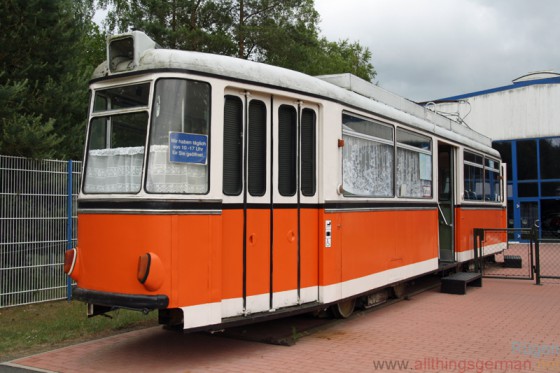Rügen’s Railway and Technical Museum (“Eisenbahn & Technik Museum”) is located in Prora, between the “Koloss” and the railway line. In fact, it is only a short walk from Prora’s station.
The sign at the entrance is a welcome sight for any museum visitor, but especially for bloggers: “entry includes free use of the toilets, the car park and unrestricted photography and filming”. There is indeed a large car park and flash photography is not a problem. Although the museum is so large, that in the main hall a small compact camera’s flash may not have much effect. The toilets, however, are at the furthest possible point in the museum from the entrance.
 The entrance to the museum is through a tram
The entrance to the museum is through a tram
The entrance itself is an usually but fitting way in – through a tram. You climb in at the middle, pay, and go out through one end. For those not able to climb up the steps into the carriage there is, however, a level way in as well. [Read more…]
 With the
With the 